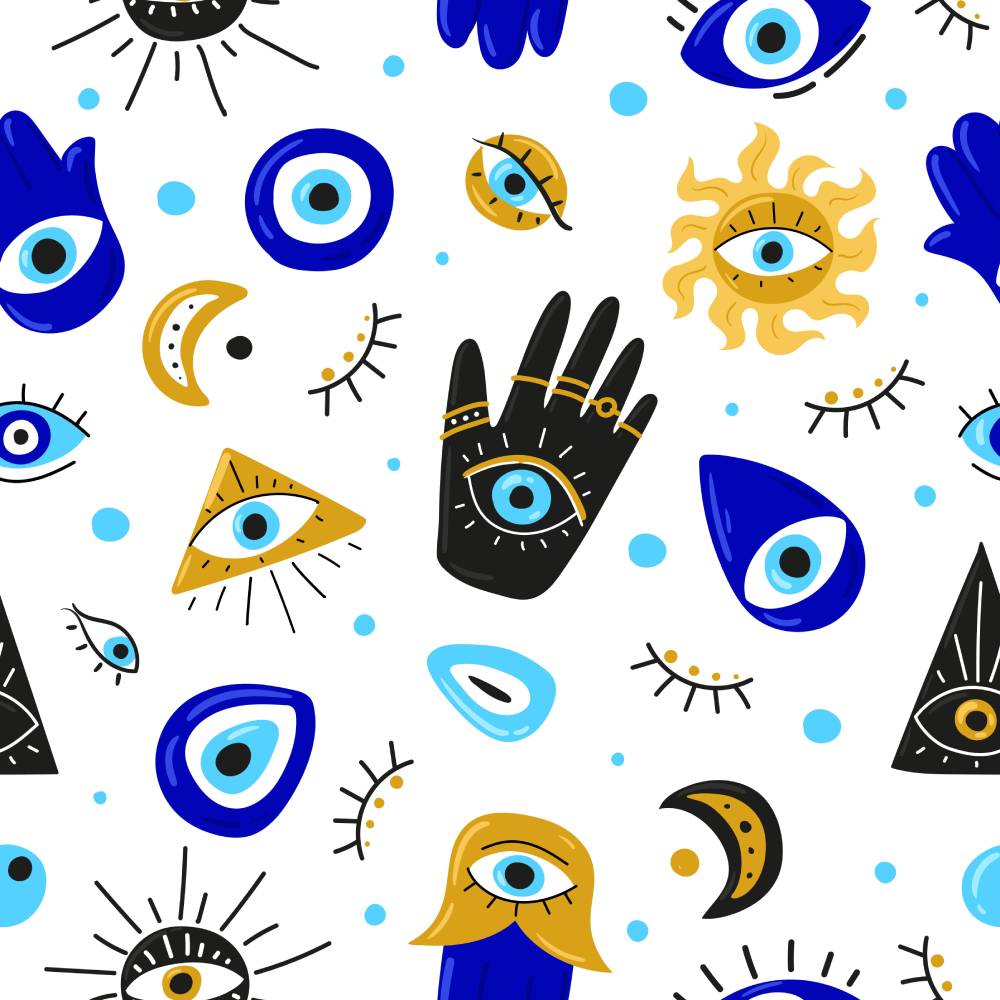Origin: The concept of the Mal de Ojo, or Evil Eye, originates from ancient Middle Eastern cultures. It’s a prevalent belief across multiple cultures worldwide, including those in the Mediterranean region, West Asia, and the Americas.
Symbolism: The Evil Eye is often seen as a powerful amulet believed to protect against misfortune or injury caused by the malevolent glare of an envious person.
Design: Mal de Ojo bracelets often feature a distinct ‘eye’ symbol. This eye symbol is typically blue and white in color, representing the evil eye that the bracelet is designed to ward off.
Material: Mal de Ojo bracelets can be made from various materials, including gold, silver, gemstones, or glass. The choice of material depends on personal preference and cultural traditions.
Widespread Usage: Mal de Ojo bracelets are not limited to one particular culture or religion. They are used by people across different faiths and cultures, such as Christianity, Judaism, Islam, and Hinduism.
Fashion Statement: Apart from their symbolic significance, these bracelets have also become a fashion trend. They add a unique touch to various outfits, making them a versatile accessory for any style.
Gifts of Protection: Mal de Ojo bracelets are commonly gifted to newborns and young children as a protective measure. It’s believed that children, with their pure and high energy, attract more envy and are thus more susceptible to the Evil Eye.
Color Significance: While the traditional Evil Eye is blue, variations of colors can symbolize different things. For instance, a red or pink Evil Eye symbolizes love, a green one stands for good health, and a purple one for spiritual growth.
Celebrity Influence: The Mal de Ojo bracelets have gained popularity in recent years, partly due to celebrities such as Kim Kardashian, Rihanna, and Gigi Hadid sporting them.
Universality: The idea of an Evil Eye exists in many cultures under different names. In Spanish cultures, it’s called ‘Mal de Ojo’, while in Turkish cultures, it’s known as ‘Nazar.’ Regardless of the name, the purpose remains the same – to offer protection from envious or harmful glares.

